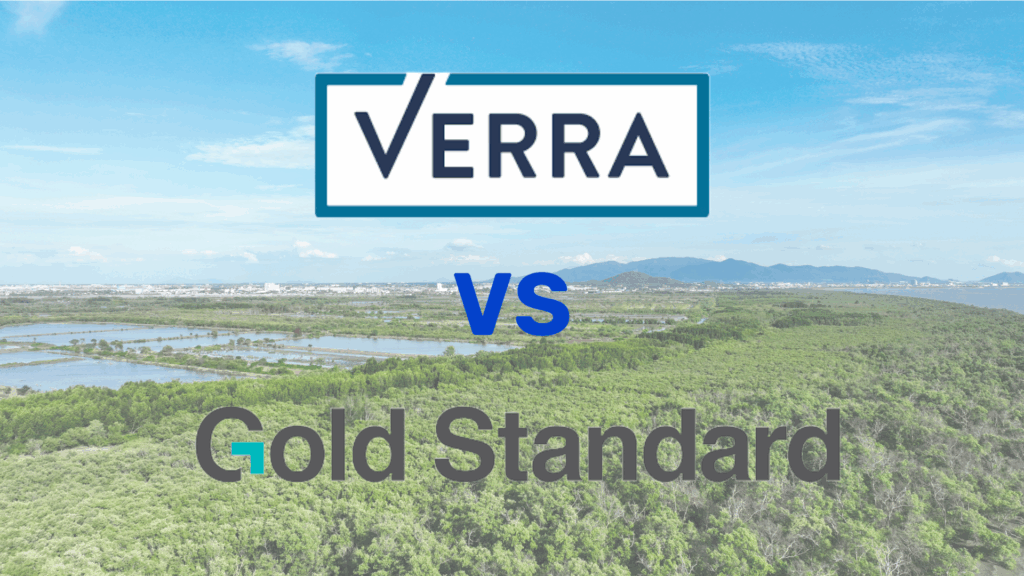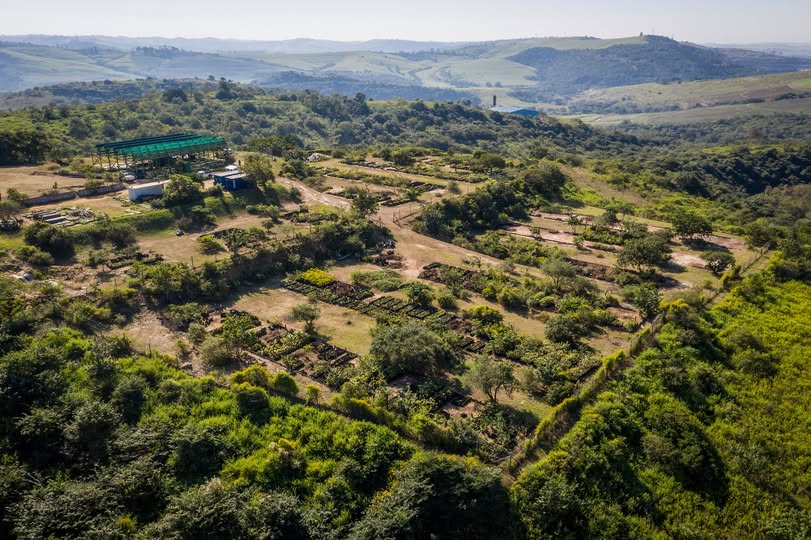Not all carbon credits are created equal. Certification by reputable standards ensures that a project’s carbon reductions are real, measurable, and additional (meaning they would not have occurred without the carbon finance). Among the most widely recognized standards in the voluntary carbon market are Verra’s Verified Carbon Standard (VCS) and the Gold Standard (GS).
For companies, it might be a problem to choose which standard to adhere to. In this article, we’ll unpack the key differences between Verra and Gold Standard to help project developers, investors and company leaders make an informed decision about which certification is best suited for their project.

Carbon credit certification standards provide the rules and processes that govern the entire lifecycle of a carbon project, from its design to the issuance and retirement of credits, ensuring that emission reductions are credible. Without them, the market would be saturated with greenwashing – companies pretending that they are contributing to climate action.
Certification involves third-party validation and verification, which results in credits that are issued to the project developer and can be sold or retired in carbon markets. The most prominent certification bodies in the voluntary carbon market are:
The certification process is robust and multi-layered, typically involving:
It is worth noting that, while these certifications aim to fight climate change through emissions reduction, Verra and Gold Standard are not interchangeable, given that their main focus, benefits scheme and methodologies are quite different.

Despite both combating climate change through verifiable emissions reductions, Verra and Gold Standard are very different in their core focus, operational scope, and approach to sustainable development.
Established in 2007, Verra quickly became the world’s most prominent and widely adopted carbon crediting program. As of mid-2024, Verra has issued over 1.2 billion credits, representing approximately 70-80% of the cumulative credits generated in the voluntary carbon market.
Founded by WWF and other NGOs in 2003, the Gold Standard is often favored by projects seeking to align with the UN Sustainable Development Goals (SDGs). While smaller in volume compared to Verra, Gold Standard credits are more expensive due to their enhanced integrity and co-benefits.

The table below summarizes the key differences between Verra and Gold Standard, in terms of requirements and scope of application:
Criteria | Verra (VCS) | Gold Standard (GS) |
Established | 2007 | 2003 |
Main Priority | Scalable GHG emission reduction and removal | Climate impact and sustainable development benefits |
Sectors Covered | All major sectors | Mostly community-based projects |
SDG Impact | Optional (via CCB or SD VISta add-ons) | Mandatory contribution to at least 3 SDGs, continuously monitored |
Stakeholder Engagement | Encouraged; public consultation for some methodologies | Mandatory and robust, including public comment periods and local community engagement |
Co-Benefits | Optional add-ons | Mandatory to certification |
Methodology Flexibility | Broad and adaptable; largest library | Limited but highly rigorous and prescriptive; strict adherence required |
Monitoring & Verification (MRV) | Strong focus on GHG quantification and integrity | Strong MRV for GHG, plus rigorous monitoring and verification of SDG impacts and social metrics |
Cost Implications | Lower per-credit costs due to volume; efficient for large projects | Higher upfront due diligence and administrative costs |

The typical timeline for a Verra project, from concept to first credit issuance, ranges from 9 to 18 months.

The development timeline for a Gold Standard project is generally longer, ranging from 12 to 24 months.
Cost Type | Verra (VCS) | Gold Standard (GS) |
Methodology Use | Free (publicly available) | Licensing fee may apply for specific methodologies |
Validation & Verification (VVB Fees) | $10,000 – $50,000+ (per cycle) | Similar range, but often higher due to more extensive documentation and stakeholder audit requirements |
Registry & Issuance Fees | Approx. $0.10 per credit (Verra fee) + registry fees | Approx. $0.15 – $0.30 per credit (includes certification and registry costs) |
Project Development (Internal/Consulting) | Varies, can be optimized for scale | Often higher due to mandatory detailed SDG assessments and community engagement processes |
Time to Market | 9–18 months | 12–24 months |
Verdict: Verra is more scalable and cost-effective for high-volume projects; Gold Standard may incur higher upfront costs but offers greater co-benefit visibility.
Generally, Gold Standard credits command a higher price (by 20–40%) due to their strong SDG narrative and traceability. Buyers looking for high-integrity credits or pursuing ESG goals may prefer GS.
On the other hand, Verra credits, especially from REDD+ and renewable energy, are more common and widely accepted.
The voluntary carbon market prices credits based on a myriad of factors, including project type, vintage, location, perceived integrity, and, critically, the certification standard.

Verra is more suitable for forestry, industrial and energy-intensive projects, as its methodologies cater to a broad technical scope and high-volume generation. Social impact and community projects are better aligned with Gold Standard, given its framework is also designed to capture and verify social impacts.
Engage an expert or use pre-feasibility tools to estimate potential credit issuance, costs (PDD development, validation, verification, registry fees, and internal resource allocation), and timeline (development and audit).
Evaluate current spot and forward prices of credits by standard and project types using exchanges like CBL, AirCarbon, or Patch. While Gold Standard credits often command a premium, assess whether your project’s volume and development costs justify that premium over the higher liquidity and lower per-unit cost of Verra credits.
Verra allows pairing with CCB for biodiversity or SD VISta for SDGs. This can increase your credit’s price without switching to Gold Standard.
Buyers are becoming selective. Review initiatives like the ICVCM Core Carbon Principles or the SBTi’s Beyond Value Chain Mitigation to align your project with their expectations.
The choice between Verra and Gold Standard is a crucial strategic decision that impacts project design, funding, market positioning, and long-term viability.

While Verra and Gold Standard are globally recognized certification frameworks, the right choice depends on your project’s scope, objectives, and audience.
Evaluate your project’s goals, conduct a cost-benefit analysis, and consider who your eventual buyer will be. By aligning your carbon project with the most suitable certification standard, you not only ensure its credibility, but also maximize its potential for both financial return and positive environmental impact.